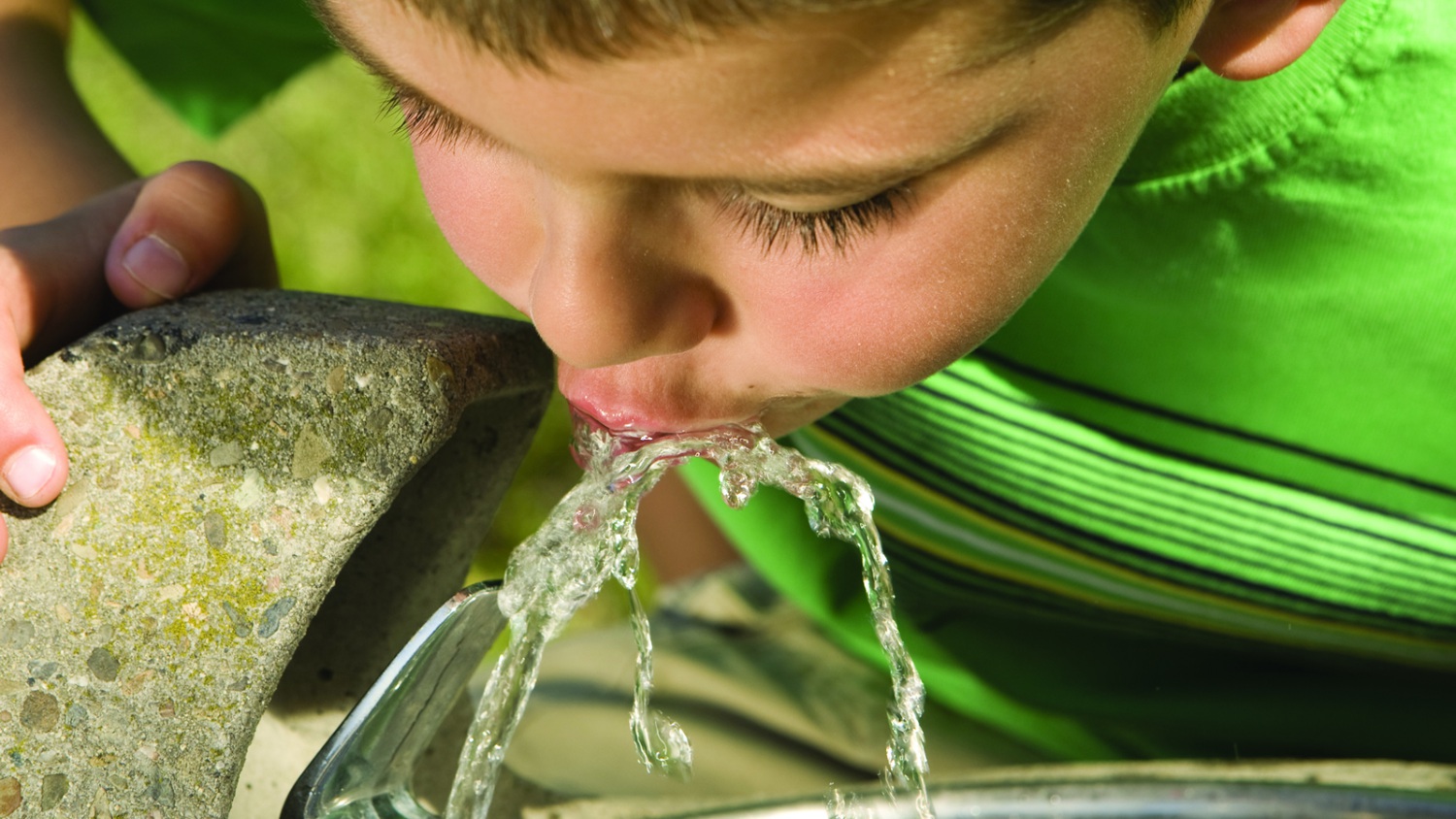
Green schools guide
How parents, teachers, and kids can work together for a better future
From back-to-school season to Earth Day and beyond, this toolkit offers parents, teachers, staff, and students ways that they can make their schools more eco-friendly.
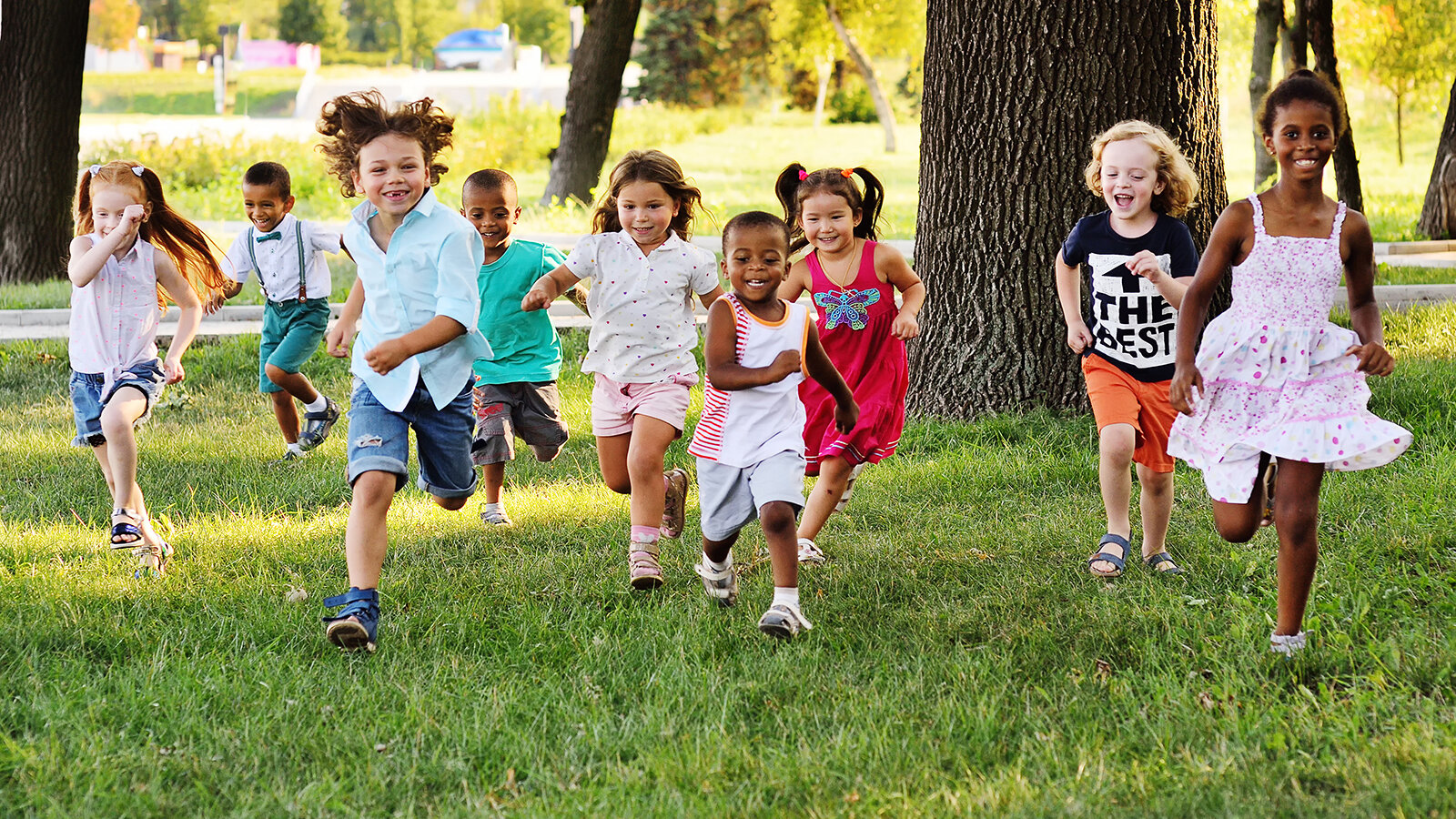
The best way to teach children to value our planet is by example. Parents, teachers, and mentors can be environmentalist role models in many ways, from pushing for political action on climate change to simply buying less stuff. Whether during back-to-school season, Earth Day or any other day of the year, parents, teachers, staff and students can use this guide to get kids involved and to make their schools more eco-friendly. The guide offers ways that schools can reduce emissions and pollution from transportation and electricity, stop using toxics, waste less food and extend the life of school supplies.
Transportation
Electric School Buses
The transportation sector is the leading source of greenhouse gas emissions in the United States, and is the source of 27% of all greenhouse gas emissions- over half of which come from private cars. About 54% of students in the US drive or are driven to school, a number that has steadily increased over the years. By making it easier and safer for our kids to get to school without a private car and by making our school bus fleets cleaner and more efficient, we can cut down on our transportation emissions and pollution. Below are some ways parents, teachers, and school staff can help make our school transportation system cleaner and greener.
Electric school buses and V2G technology
About 40% of children in the United States use school buses to get to and from school. Students taking the bus is better for the climate than being driven individually, but many schools aren’t maximizing the environmental and financial potential of their school bus fleets. Battery electric buses are available on the market and are now a viable option for school districts in most climates, but make up less than 1% of all school buses as of August 2021, as opposed to the 95% that are powered by diesel.
Electric school buses produce no tailpipe pollution and cut down on greenhouse gas emissions when compared to diesel, propane, or natural gas buses. It’s estimated that transitioning the US to electric school buses would save about 8 million metric tons of greenhouse gas emissions a year, and would cut diesel emissions that can cause cancer, asthma, and cognitive delays in children who are exposed to exhaust by riding the bus or living on a bus route. And while they cost more for districts upfront, they can save money on fuel in the long run (electric buses cost an average of 14 cents a mile to operate, compared to 49 cents for a diesel bus).
Through the Clean School Bus Program, the U.S. Environmental Protection Agency will distribute $5 billion over the next five years to fund school districts wanting to replace existing diesel school buses with electric or low-emission models
When equipped with vehicle-to-grid technology, districts can unlock even more benefits. Vehicle-to-grid or V2G technology enables the battery in an electric bus to transfer energy two ways. All electric vehicles are equipped with a battery that can be charged with electricity from the grid, and V2G technology allows the battery to go back to buildings and the grid as well. This has a number of benefits. A major one for the school district is that they can, in some cases, make revenue by selling back electricity to the utility during peak energy usage due to the unique usage schedules of school buses. This technology has other advantages too- the process of “demand response” can reduce the need for utilities to operate fossil-powered peaker plants, and the storage provided by battery-powered buses can assist with switching our power grid to renewable energy. School buses equipped with V2G technology can also be a source of emergency power for schools and other essential infrastructure during power outages and extreme weather.
School districts can…
- Make a public plan and timeline to transition to electric buses as much as possible, as soon as possible, ideally with vehicle to grid technology. Here’s how:
Make a plan for funding: Transitioning to electric school buses is now easier than ever thanks to recent incentives being offered at every level of government to support the transition to electric buses. Many of these incentives are stackable. At the federal level, both the Bipartisan Infrastructure Law and the Inflation Reduction Act allocated billions for school districts nationwide to transition to electric school buses through the Clean School Bus Program and the Clean Heavy Duty Vehicles Program, both administered by the EPA. At the state level, availability varies, but many states such as California, Colorado, New York and Connecticut are offering funds for districts that invest in electric school bus technology. Some incentives and financing structures are also available at the utility level.
Make a plan for charging: Work with your team and with utility representatives to determine where charging infrastructure will be located. Consider what electric infrastructure already exists and where, as well as costs and benefits to neighborhoods. Make an interconnection plan and figure out what needs to be done to connect charging infrastructure to the grid. Make a charging plan and talk to your electric utility to understand how electric school bus charging will impact your electric bill. Interventions like managed charging, as well as other energy efficiency measures, can help reduce the financial impact of charging.
Operations plan: Consider your routes and their length and topography, as well as the weather you expect to experience, especially extreme heat or cold. Think about which routes are best to roll out electric buses first, and think about the impact of electrification on fleet replacement and route planning.
Procure buses and chargers: Like any other procurement process, make sure to look at the terms of the contract carefully. You may want to consider a Request for Information process (RFI) to understand the market and your options as opposed to going straight to a RFP.
Install the infrastructure: The best type of charger for your district depends on a number of factors, including the type of buses procured, your bus routes and electric infrastructure. Some districts choose to outsource charging to organizations that offer subscription-based charging solutions. Some, but not all, chargers offer vehicle-to-grid capabilities, which offer a number of benefits.
Train staff: Drivers and maintenance staff should be trained in the basics of electric school buses before the program is launched.
Test buses and equipment: Test buses and charge how you expect to use them, on the routes and timelines that they will be used.
Deploy buses!
Parents, teachers and administrators can…
- Encourage your school district to make the transition. Here’s how:
Make a team: Find a group of people who are also interested in the issue, preferably who are part of your school’s community, like parents, teachers, staff, and students.
Make a goal: Make a defined goal for your campaign- simply calling for your school to release a timeline to transition to electric buses within the next 2-7 years is a good one.
Identify stakeholders: Figure out what the chain of command is for transportation and school bus fleets in your school. Who makes the decisions? This will help you decide on your targets as well as your allies.
Make a campaign plan: Figure out what individuals or groups you are trying to convince, and what their interests might be. Make a plan of actions to take to get more people involved in the campaign, gain publicity, and convince or pressure your target.
Execute your campaign plan: Take actions to get the word out like getting large numbers of signatures on an open letter or petition, putting on events to educate the school community and pressure your targets, like educational meetings and town halls or social events, and utilize social and traditional local media to get the word out as well. Meet with relevant decision makers and stakeholders to tell them about the benefits of electric buses, to share success stories and case studies, address their concerns, share resources and information, and share your story of how the transition would impact you and others.
Win the win: When you reach your goal, celebrate and publicize the win!
More resources on electric school buses:
- Back to school on an electric bus 2023
- Electric School Buses and the Grid
- Accelerating the Transition to Electric School Buses
- Electric School Bus Initiative
- School Bus Electrification Roadmap
- Electrification Coalition
Walking and biking
Walking and biking to school creates no planet-warming greenhouse gas emissions or harmful pollution. It’s also great for kids’ health. Over three quarters of US kids and adolescents are not getting enough physical activity, which can lead to reduced cognitive performance, and increases the risk of many health conditions. Being able to walk or bike to school- even with adult supervision– is also associated with greater autonomy and confidence in children. Among students in the United States, only about 10% walked or biked to school in 2017, compared to 89% in 1969. Here are some ways that parents, teachers, schools and districts can make it easier for kids to get to school the active way.
Walk and bike buses
One thing that parents, teachers and administrators can do to encourage more kids to walk or bike to school is to start a walk or bike bus. The idea behind a walk or bike bus is simple: A group of parents, teachers, or other trustworthy adults walks or bikes a group of children to school. Safety concerns are often cited by parents as a reason why they are hesitant to allow their children to walk or bike to school. A large group of children is much more visible (and therefore safer) than just one or two walking alone. It’s also a lot of fun, and a great way for kids to socialize while getting in physical activity. It can also help reduce student absenteeism caused by parents with variable or long working hours having issues with being able to drive their children to school.
Parents, teachers, and staff can…
- Start a walk or bike bus! Here’s how:
Find your why: Figure out why you want to start a walk or bike bus. This might be to help fight climate change, to get kids more physically active, or to build more community. Defining the reason you want to take on this project will help you motivate yourself to continue when things get difficult.
Find your team: It’s best to have several adults willing to lead a walk or bike bus so that one person isn’t responsible for it every single day. For a walk bus, the CDC recommends one adult for every three children four to six, one adult for every six children aged 7 to 9, and for older children, fewer adults are needed. For a bike bus, one adult for every 3 to six children is generally advised. As for recruitment, try asking at your school’s Facebook group, Parent-Teacher Association meetings, or anywhere else you can get a hold of fellow parents and students. Other ways to recruit include announcing the program via school newsletters, assemblies, or announcements, or by distributing sign-up sheets for the program to classrooms. You can also start small by recruiting families you know personally or your child’s friends, and expand as you gain experience.
Make a route: The first step towards making a route is figuring out your school’s catchment zone. For walking bus routes, it’s best to target students living about a mile away from school, or about two miles for a bike bus. One way to create a route is to look at bus routes and base your pickup locations around that. It’s best to pick streets that have sidewalks and lower speed limits if possible. Once you have a route, make sure to print it out on fliers and distribute it to anyone who may want to join with a schedule of when the bike or walk bus will be operating and your contact information. Try your best to make sure that the walk or bike bus is operating as consistently as possible, as this will help retain participants.
Expand!: Keep announcing the program at assemblies, meetings, newsletters, school announcements, on fliers, and in classrooms to recruit more student participants and parent volunteers. Consider telling your story at other schools in your community to encourage people to start other programs as well!
More resources on walk and bike buses:
Perform a walk audit
Another way to help make it easier for students to walk and bike to school is to call attention to unsafe infrastructure around the school and on student’s routes to school. Many places in the United States are unsafe to walk or bike. Walk audits are a way to call attention to this issue and bring that information to decision-makers who can choose to invest in safer infrastructure.
Parents, teachers, and staff can…
- Hold a walk audit! Here’s how:
Figure out the where: One option is to follow the routes that students take to school, or your proposed walk or bike bus route. Another is to audit the area right around the school.
Find your team: Find a team of interested people to perform the audit with you- ideally fellow parents, staff, or community members. You should also reach out to your local elected officials and committees that deal with transportation issues to invite them to participate as well. It’s worth inviting students to participate and give their feedback as well. Some of the infrastructure issues that make it difficult, uncomfortable or unsafe for children to walk or bike to school might be less apparent to an adult- for example, barriers like fences or hedges that might block the view of someone with a shorter stature, or a crossing signal might not offer enough time for a young child who walks slower to cross the street. It’s important to know what these issues are so that they can be remedied.
Pick a time: If the purpose of the audit is to make it safe for kids to get to and from school, it makes sense to perform the audit during the hours when most students are going to and from school to get a good sense of the traffic at that time. It also might make sense to perform the audit later in the day when some students are returning from extracurricular activities.
Perform the audit: Set a time and place to meet with your group to start the audit, and distribute printed assessment sheets, maps of the area or route, clipboards and pens to everyone. Walk the route, or around the perimeter of the school, writing down your observations as you do so and marking things you notice on the map, whether that’s an area of concern or good infrastructure. Take photos as you go of notable features, whether they’re positive or negative.
Follow up: Use the photos, maps, and assessment sheets to summarize and present your findings in a report, along with some suggested solutions for the area. Send the report to your local elected officials and try to set up meetings to present your findings and ask for changes to be made. Depending on the route you take, different government bodies may manage the streets you’re auditing- smaller and neighborhood streets will likely be under the purview of city officials like the city council, mayor, or transportation committee, while state or county roads may be controlled by your state’s department of transportation. Consider getting in touch with the media as well- more visibility and public knowledge of street safety issues will help you get more solutions implemented on a quicker timeline.
More resources on walk audits:
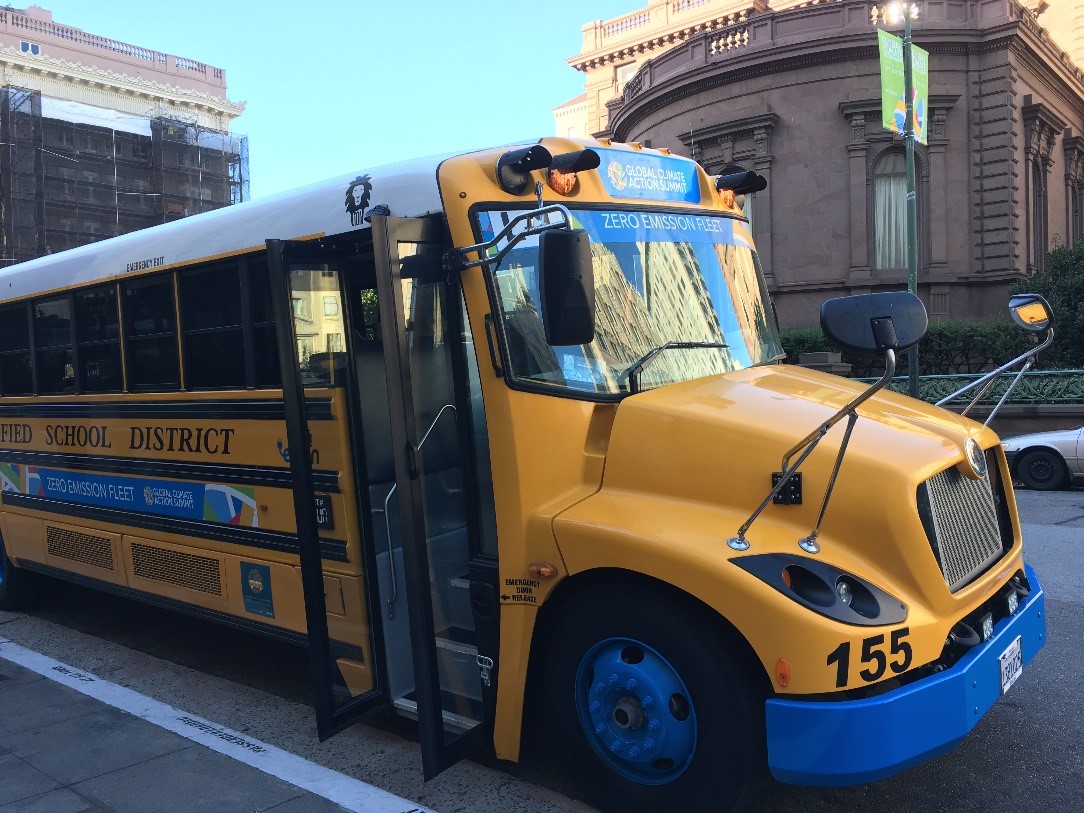
Water
Get the Lead Out
Kids need safe drinking water — especially at school, where they go to learn and play each day. Unfortunately, lead is contaminating drinking water at schools and preschools across the country. Find out how to ensure safe water in your school with our Get the Lead Out toolkit.

Energy
Efficiency and Electrification
The electric grid is the source of 25% of U.S. emissions and fossil fuels still produce 60% of U.S. power. In many areas, the resilience of the power grid is a problem because increasingly severe, climate-induced disasters combine with an outdated grid to cause power outages on a wider scale and with greater frequency. Schools have the ability to tackle both of these issues by reducing the amount of energy they use. Administrators should ensure that buildings and appliances are as efficient, clean and resilient as possible by installing solar power-generating infrastructure (such as panels) and storing excess energy in batteries.
New tax credits can help your school go green
New federal funding created through the Inflation Reduction Act (IRA) and the Investment Infrastructure and Jobs Act (IIJA), offer funding opportunities to help your school go green. You can learn more about tax credits for greener schools here.
Efficiency and electrification
The most environmentally friendly energy is the energy you don’t use. Schools are the third-largest users of commercial energy. By implementing efficiency measures, schools could eliminate 30% of that energy use.
The Renew America’s Schools (RAS) Program dedicates $500 million to fund energy efficiency improvements in schools, specifically focusing on the highest-need districts.
There’s a wide range of actions schools can take to increase the efficiency of buildings themselves, which can help reduce money spent on heating and cooling, and make schools more comfortable for students and staff. Here’s how schools can make their buildings and appliances more efficient:
Invest in weatherization: A few good places to start are making sure the building is airtight, upgrading windows and doors, and working on building insulation.
Upgrade lighting: Replacing incandescent or fluorescent light bulbs with LEDs when they reach the end of their life can cut energy usage in half, and eliminate the threat of the toxic mercury found in flourescents. LEDs also last longer and require fewer changes.
Switch HVAC and water heating systems: Replacing existing gas, propane or electric resistance HVAC systems with heat pumps — and switching out water heaters with heat pump water heaters — when they stop working can dramatically increase the efficiency of the systems. While these systems cost more upfront, they cost less to operate and can save money over time.
More resources on efficiency:
Solar on schools
After you’ve made sure that your school buildings are using as little energy as possible, the next step is to make the energy you use clean and renewable. Rooftop solar panels are a great way to achieve that.
Thanks to Congress, putting solar infrastructure on your school has never been cheaper. Between now and 2032, direct-pay tax credits from the federal government will cover at least 30% of the cost of your school district’s solar project and installation.
More than 8,400 schools — almost 1 in 10 public schools — nationwide have solar installations. That number has tripled in just seven years. By installing solar, schools can save on their energy bills, either by paying a lower rate for power via an agreement with a third party, or by owning the solar panels and the energy they produce directly.
Schools and districts can…
- Install solar and storage on schools! Schools can unlock even more benefits by installing battery storage systems along with solar arrays. In some places, schools can store power and sell it back to the grid. They also can use onsite power from the stored solar when electricity costs are highest, and engage in “peak shaving,” using power from their stored solar to “flatten the curve” at peak energy usage. When properly equipped, storage can also aid in resilience by giving schools a source of power during outages.
Look at energy needs. Examine facilities’ electric bills from the last year or so to understand how much energy they’re using, and keep in mind things that might decrease or increase the power demand, such as greater efficiency and weatherization or electrification efforts.
Look at solar potential: Look at the space available for solar panels as well as its suitability. It’s ideal to work with a solar company or consultant for this part of the process, because how well a space will work for solar depends on multiple factors.
Make a financial plan: The two main ways schools can finance solar are via third-party ownership and direct ownership. With third-party ownership, a school will work with a utility or solar company (usually by setting up a power purchase agreement). In a purchase power agreement (PPA), the third party will construct, pay for, maintain and own the solar arrays, and will sell the energy they produce to the school, typically at a discounted rate. Since a third party can have tax liability and schools don’t, they can take advantage of incentives and pass the savings onto schools. This allows a school to go solar with little to no upfront investment. This is how the majority of solar capacity on schools today is financed, but this is currently only allowed in 28 states and Washington DC.
With direct ownership, the school finances, develops, and operates the solar infrastructure itself. This can offer the greatest return on investment and is a viable option in states where third-party ownership is not an option. However, this requires more work for the school. Financing options such as bonds and capital budgets are commonly used. Schools often incorporate solar with other capital improvements.
Storage to compliment solar can also be directly owned by the school, or owned by a third party. Like vehicle-to-grid technology, solar and storage can be used for demand response and to sell energy back to the utility in certain cases. Both of those options can help with financing in partnership with your utility.
Federal, state and utility incentives are an additional option for financing, although they are often only available when a school directly owns an array.
Parents, teachers, and staff can…
- Launch a campaign to encourage your school to install solar!
For the best chance of success, launching a campaign to encourage your school or district to go solar requires building a team, setting a goal, identifying stakeholders, making and executing a campaign plan, and then “winning the win.” However, there are a few things to keep in mind when it comes to setting a goal.
Every location has a different political climate, incentives and obstacles when it comes to “going solar.” Getting informed about solar on your school and in your area may involve reaching out to local solar installers to see what might be a realistic target for your school and district.
More resources on solar:

Waste
Reduce e-waste with longer-lasting Chromebooks
The COVID-19 pandemic pushed schools to provide all their students with their own devices, often low-cost Chromebooks. A laptop for every student is likely here to stay, but how do we make sure our laptops are designed to last?
On Sept. 14, Google announced that the tech giant would give Chromebooks currently in use 10 years of support. This victory came after months of our advocacy and campaigning to extend the life of these computers.
Manufacturing a computer consumes a great deal of resources. In fact, some estimate that the information technology sector is responsible for about as much greenhouse gas emissions as the airline industry. When Chromebooks and other electronics reach their expiration date, only one-third of this waste is properly recycled. If it isn’t designed to last, our environment pays the price.
All tech devices should last longer. With a lifespan of 10 years, fewer working Chromebooks will be disposed of because they’ve reached their ‘death date.’ Continuing improvements in technology mean products should last longer each year, and Google and other tech companies should continue to innovate ways to commit to a circular economy.
School districts can…
- Review our Frequently Asked Questions about Google’s announcement to ensure the district makes the best decision regarding their Chromebooks.
- Pass educational technology purchasing policies that require at least 10 years of service for devices.
- Consider starting a laptop repair program where students repair their own devices.
These policies can ensure our schools teach students how to have a sustainable relationship with technology, where they gain digital literacy while also learning technological stewardship.
Teachers can…
- Make sure school IT departments have reviewed our Frequently Asked Questions about Google’s announcement to ensure the district makes the best decision regarding their Chromebooks.
- Work with their schools to pass purchasing policies that require at least 10 years of service from educational technology.
Parents can…
- Make sure school IT departments have reviewed our Frequently Asked Questions about Google’s announcement to ensure the district makes the best decision regarding their Chromebooks.
- Use our guide, “‘When will my Chromebook expire?’” to ensure the new laptop you buy for your child is designed to last.
- Our Failing the Fix guide found that Chromebooks are less repairable than other laptops. Consider buying a brand that scored a higher grade for repairability.
More resources on Chromebooks:
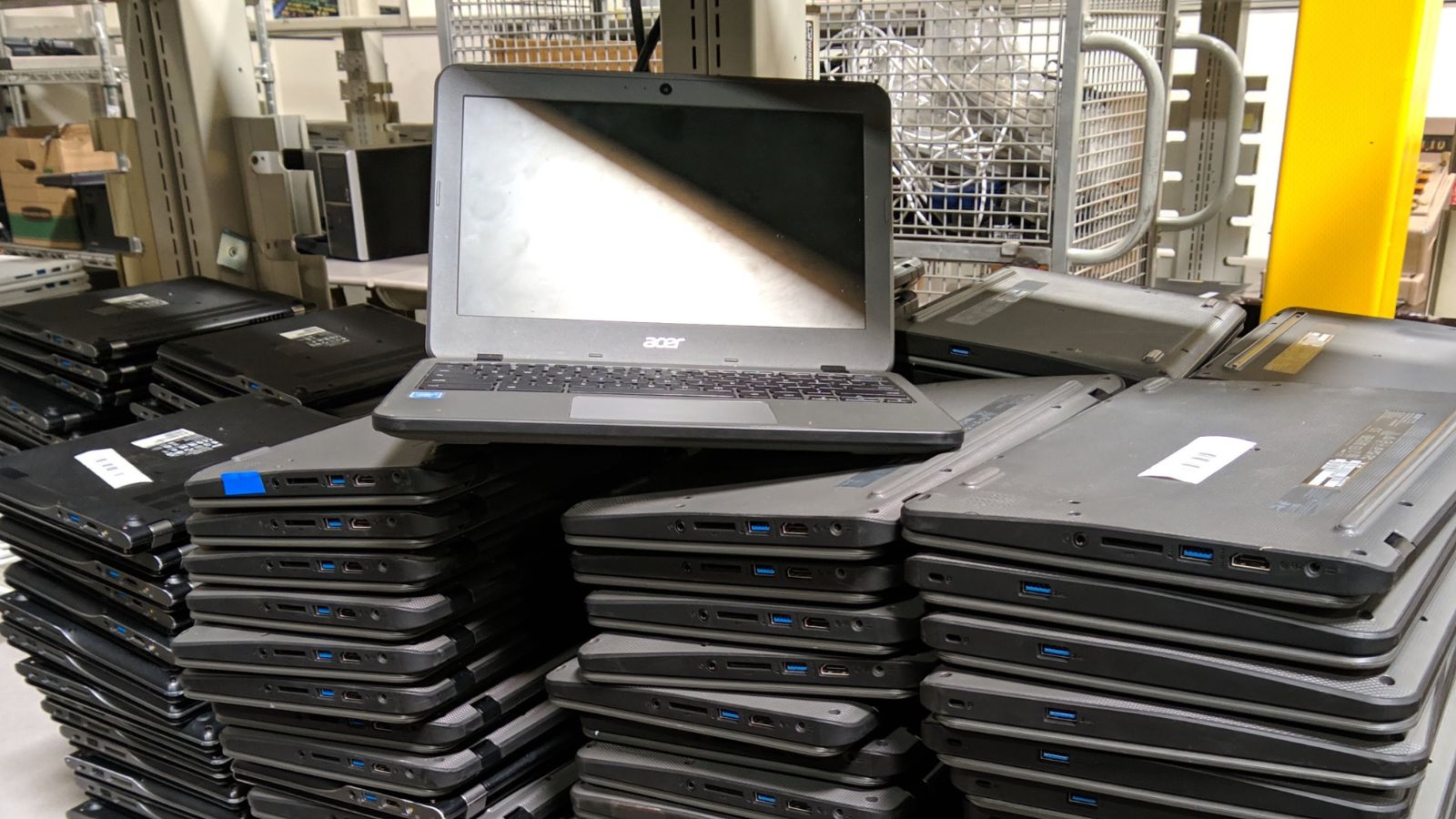
End food waste
The EPA estimates that 35% of our food goes to waste every year. That means all the resources that were used in the course of growing that food — from fresh water and soil nutrients to agricultural chemicals and fuel — are all wasted as well. And when food ends up in landfills, it releases methane, a potent greenhouse gas that contributes to global warming. To make matters worse, amidst all of this abundance, one in ten Americans – many of them children – are food insecure, lacking reliable access to sufficient, affordable, nutritious, and culturally appropriate food. Meanwhile, researchers have calculated that the food we waste is sufficient to feed every person experiencing hunger.
Reducing food waste could directly eliminate an estimated 4% of greenhouse gas emissions in the U.S. But it could also have much broader environmental benefits beyond shrinking our carbon footprint. Less waste and a better distribution system would let us handle a likely population increase while shrinking the amount of land needed for new agriculture and reducing deforestation, biodiversity loss, water use and water pollution.
By focusing less on generating more food and more on the wise use of the food we have, we could also concentrate on producing food that is better for us and better for the environment. Healthier kids and a livable environment for their future is a win-win!
Schools have an important role to play in bringing about an end to food waste. According to the USDA, in 2019, schools across the country served nearly 7.5 billion school meals between breakfast, lunch, and summer meal offerings. And whether students are eating what’s available in the cafeteria or bringing their own food, schools can help students reduce food waste at lunch time. Finally, schools have the unique opportunity to educate the next generation of consumers and entrepreneurs to be conscious of food waste and actively working toward solutions in their own lives.
Schools from Oakland, California to Rhode Island have already taken action to adopt food waste best practices, from setting up a simple “share table” where students can leave unwanted food items for other students to take, to starting an on-site composting program or signing up for an industrial composting service. The impact is powerful. One elementary school in Chicago reported a 30% reduction in the food waste they were sending to the landfill after they adopted a trash and composting sorting process in their cafeteria.
School districts can…
- Replicate a food waste pilot program across the district. Not every school district is the same. But once one school in a district has successfully established a set of practices that work within the circumstances of their locality, school districts can help roll out those best practices in other schools.
- Connect schools to a composting facility. If schools cannot compost on-site, schools and districts can contract with a hauler to take their food scraps for off-site composting.
Parents, teachers and administrators can…
- Conduct a food waste audit. Food waste audits are an important first step to identify where food waste is happening and which solutions are most critical to implement to have the biggest impact. | Step-by-step guide
- Create a share table. Share tables help combat food waste and hunger at the same time. | Step-by-step guide
- Start a composting program. If your school has the resources or some motivated parent volunteers, setting up an on-site composting program can divert food waste from the landfill, provide an educational opportunity for students, and generate a valuable resource in the form of finished compost that can be spread on the school grounds or sold to nearby farms or local businesses. | Step-by-step guide
- Teach students about food waste. Parents can check out our top tips for addressing food waste in school lunches. Some educational resources are linked within.
Reduce plastic pollution
Look around your kitchen, walk around your favorite park or beach and you’ll likely find yourself in the presence of plastic. The United States produces enough plastic waste every 16 hours to fill a large football stadium. Our addiction to plastic is a growing problem, responsible for country-sized swirling gyres of plastic waste in our oceans and growing landfills in our nation’s interior. This pollution is damaging our ecosystems and endangering public health.
Plastics are also bad for our climate. The plastic industry emits an enormous amount of greenhouse gas emissions: between manufacturing, use and disposal, the U.S. plastics industry was responsible for at least 232 million tons of CO2e gas emissions in 2020, equivalent to the average emissions from 116 average-sized (500-megawatt) coal-fired power plants. Soon, by 2030, plastics production may even surpass emissions from coal.
Ultimately, we need to turn off the plastic tap, or the problem will get exponentially worse. To reduce the plastic waste that ends up in our environment, we need to dramatically reduce the amount of disposable plastic products handed to consumers every day. Many of these items are unnecessary and easily replaceable. Ultimately, we need to transition away from single-use products to reusable and refillable alternatives wherever possible– including in schools.
Public schools in the United States serve school lunches to around 30 million children every day, typically using single-use plastic trays, plates, cups and utensils. By one estimate, one middle school can create 30,000 pounds of waste every year. That’s a lot of plastic. Multiply that by the more than 97,000 public schools in the U.S. and you can quickly see the big impact schools have on our waste stream.
The good news is that many schools across the country from Portland, OR to Portland, ME, have taken action by ending their use of wasteful plastic products such as polystyrene cafeteria trays, investing in dishwashers so they can reuse cups and trays, installing water bottle filling stations to encourage reusable water bottle use and more. These efforts can have a huge impact on the waste stream and simultaneously teach the next generation how to be good stewards of our natural resources.
School districts can…
Stop using polystyrene or other disposable plastic trays, plates, cups, containers and utensils for school lunches. The lunchroom is the place where schools have the largest plastic footprint. Shifting away from single-use plastic in the cafeteria to reusable or recyclable/compostable alternatives would make a big impact.
Invest in dishwashers (for schools that don’t have them) and use reusable trays, plates, silverware and cups. Shifting away from single-use plastics in school lunches is a great step. The best alternative to turn to is reusables. Some schools will need to invest in dishwashing infrastructure, but there is a lot of potential for long-term cost saving.
Install water bottle filling stations. Having kids use reusable water bottles is a great way to keep them hydrated while also cutting down on unnecessary waste. Consider installing water bottle filling stations to make it as easy as possible for children to get water while not creating any trash.
Parents, teachers and administrators can…
Encourage kids to bring reusable water bottles. Using a reusable water bottle is a great way to keep kids hydrated while also cutting down on unnecessary waste. The easier it is to refill it, the better, so ask your school to install a water bottle filling station if they haven’t yet.
Use plastic-free school supplies and/or school supplies without plastic packaging in the classroom. Opt for plastic-free school supplies where available, including items made out of recyclable paper, cardboard or metal. Also, look for supplies that aren’t packaged in plastic. To really cut down on waste, only buy the supplies you really need.
Reuse plastic containers in the classroom for art projects or other purposes. Reusing plastic containers is a great way to cut down on waste. Instead of buying all new items for your classroom, save milk cartons to use for art projects or yogurt containers to repurpose as a pencil holder.
Educate kids about plastic pollution. Teaching kids about the impact that plastic pollution has on the environment can help students develop a sense of responsibility and environmental stewardship and empower them to reduce their use of plastic.
More resources on how to reduce plastic pollution:
- Buy Myrtle the Turtle to teach kids about the impact of plastic pollution on marine animals
- Trash in America
- Tips to avoid buying new to save money and the planet
- Share your story: How are you reducing your use of single-use plastic?
Use less plastic with refilled printer ink cartridges
Black printer ink purchased wholesale has a price tag of $1.18 per fl. oz. Yet, when Americans buy functionally the same ink in a cartridge from retailers, it costs $118 per fl. oz. Americans could save $10 billion per year by using refilled ink cartridges. Third-party sellers refill cartridges after their first use, then often sell them for less than the cost of new ones. By reusing otherwise single-use ink cartridges, the U.S. could reduce plastic use by the equivalent of 4 million single-use grocery bags per year.
School districts can…
- Use refilled ink cartridges rather than buying new ones. We recommend sticking to well-known brands in the refilled ink cartridge industry such as Staples’ TRU RED, LD and Clover. These are often marketed as “remanufactured,” cartridges. It’s a safe bet to buy any third-party ink cartridges sold by major retailers such as Best Buy and Staples.
- Look for money-back guarantees that the cartridges you purchase will work with your printer (such as those from LD and Clover).
- In general, avoid so-called “compatible cartridges,” especially sold by retailers with less quality assurance. “Compatible cartridges” sometimes, although not always, are lower quality than refilled ones. These cartridges also have fewer environmental benefits because similar to a name-brand cartridge, the body is single-use plastic rather than refilled.
Parents can…
- Sign our petition telling the FTC to end the ink trap.
- Also use refilled ink cartridges for home printers.
- Consider if you and your kids really need a printer at all. Does the school or library offer printing? Many college campuses are filled with remote print stations. You might be able to live a printer-free life easier than you think.
More resources on printer ink:
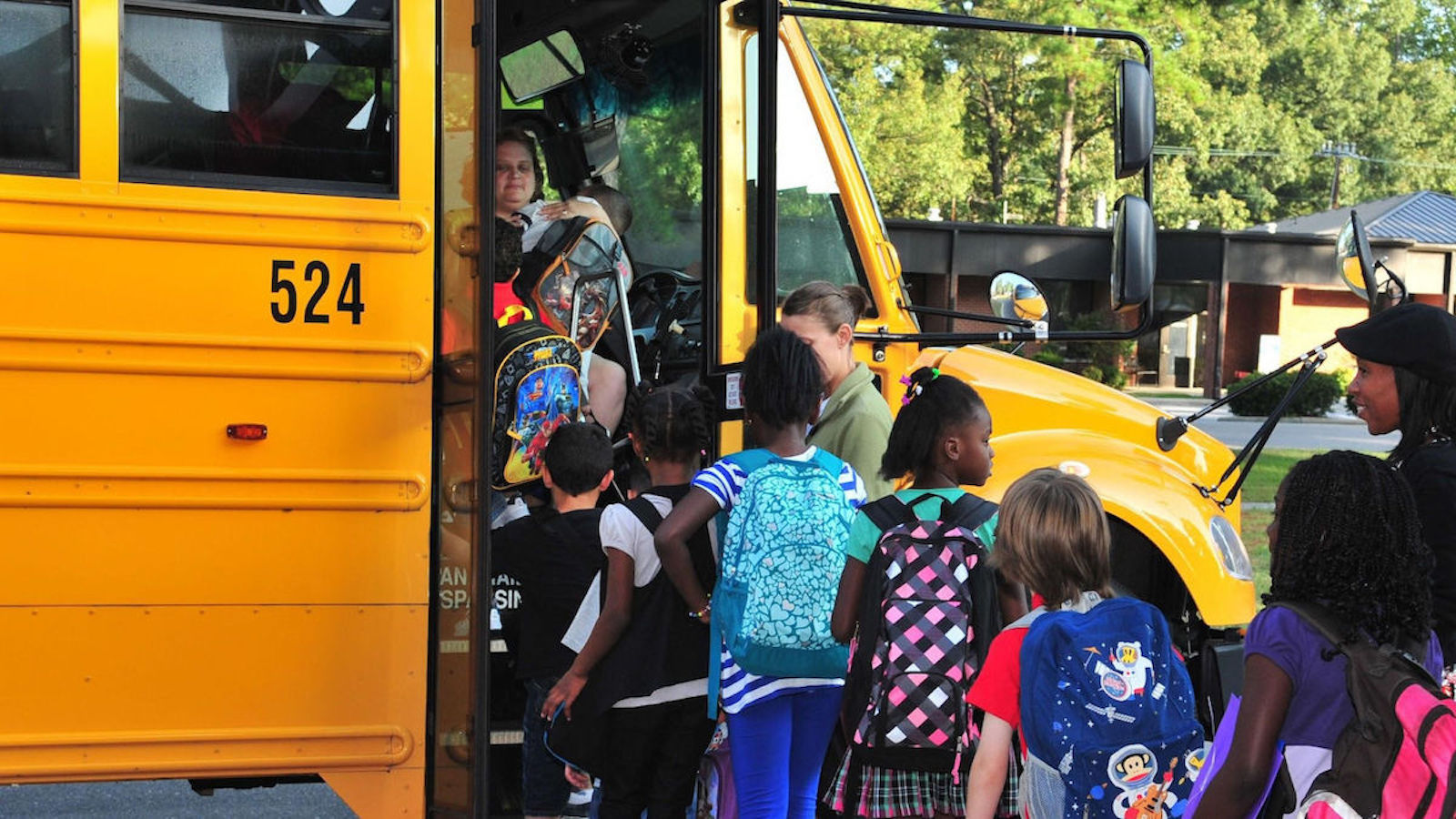
How to save money and cut down on waste when back-to-school shopping
Conserve nature
Plant a pollinator garden
Some of the busiest members of the animal kingdom are pollinators- a class of insects and other animals who’ve evolved to help plants reproduce. Unfortunately, bees, butterflies, and other critical pollinators are in decline due to loss of habitat, increased use of pesticides and changing climate.
Luckily, there are some fun and easy steps you can take to support pollinators.
Parents, teachers, and staff can…
- Plant a pollinator garden!
Whether you already have a garden at your house or school, or if you’re new to gardening entirely, planting native plants and wildflowers can transform any space into a haven for bees and other pollinators. It doesn’t hurt that pollinator gardens offer a beautiful display of nature’s colors and can be a great excuse to bring class outside! Every bit counts when planting gardens for pollinators, and you’ll be amazed at the range of wildlife that your garden will attract. As well as bees and butterflies, pollinator gardens will invite songbirds, snails, rodents and a host of other critters.
When planting a pollinator-friendly garden, it’s best to follow these guidelines:
Choose a sunny spot : Picking a spot that receives at least six hours of sun every day will ensure that your plants are well fed. Bees become more active in warm conditions, so planting flowers in sunny areas will help them make the most of your garden.
Watch out for wind: Strong winds can make it difficult for pollinators to fly between plants and collect pollen and nectar. Try to pick a location for your garden that isn’t too windy, or build a windbreak near your garden using porous materials or objects like netting, mesh and screens. Windbreaks should be placed about 4 to 6 feet behind plants or bee house to compensate for stronger prevailing winds.
Plant flowers that bloom at different times of year: Bees love flowers, especially those with purple, yellow, blue, white and violet colors. By selecting flowers with different bloom times, the bees will have the chance to visit your garden all spring and summer long. Annuals typically bloom for one year, while perennials can bloom repeatedly. Some of the best annuals and perennials to use include marigold and sunflower, and aster and coneflower.
Avoid using pesticides when gardening: The easiest way to help bees is by avoiding toxic chemicals that harm them. Try eliminating pesticides in your yards and garden, leaving nature to thrive without interference. Visiting pollinators will be free of danger, frequently returning thanks to a healthier environment and fewer chemical threats. Less pesticide use also means less toxic runoff in waterways. If pest control is necessary, you can use natural or homemade deterrents, such as those derived from vegetables or soap.
Create bee hotels: Bees’ busy lives call for some rest, and building shelters for them is quite simple. Like a birdhouse, you can construct bee houses from wood and materials easily found at craft, hobby and home improvement stores or at home. Once the frame is built, fill in the space with tubular, hollow materials with clear entrance holes, such as cardboard tubes, hollow stalks and wood blocks with drilled holes. Optimal holes are a half inch in diameter and six inches long. This is where the bees will nest, and they need room to move, take off and land. Use multiple nesting materials to diversify your hotel’s guests.
Talk about the bees and advocate for pollinator-inspired lessons
In structuring lessons in science, language, math, and art there is always room to fit in the bees! As well as their importance for the health of natural ecosystems and food systems, bees have played important roles across many different cultural traditions, have influenced agriculture and engineering, and have inspired artists to create lasting works. Advocate for bee-inspired lessons in the classroom or out in the garden to pay homage to our busy pollinating friends.
Fun fact: Bees and fast deliveries
Honey bees have developed an extraordinary form of communication known as the “waggle dance”, which directs other bees to where the best nectar can be found. As more and more bees explore the area, their directions become more refined. This method of refining information has been copied into an algorithm to help delivery drivers save time and fuel, without the need to plot journeys by hand.
- More Resources on Bees
- Buy a Bee-Friendly Garden Kit from Environment America
- See how Colleges are supporting bees
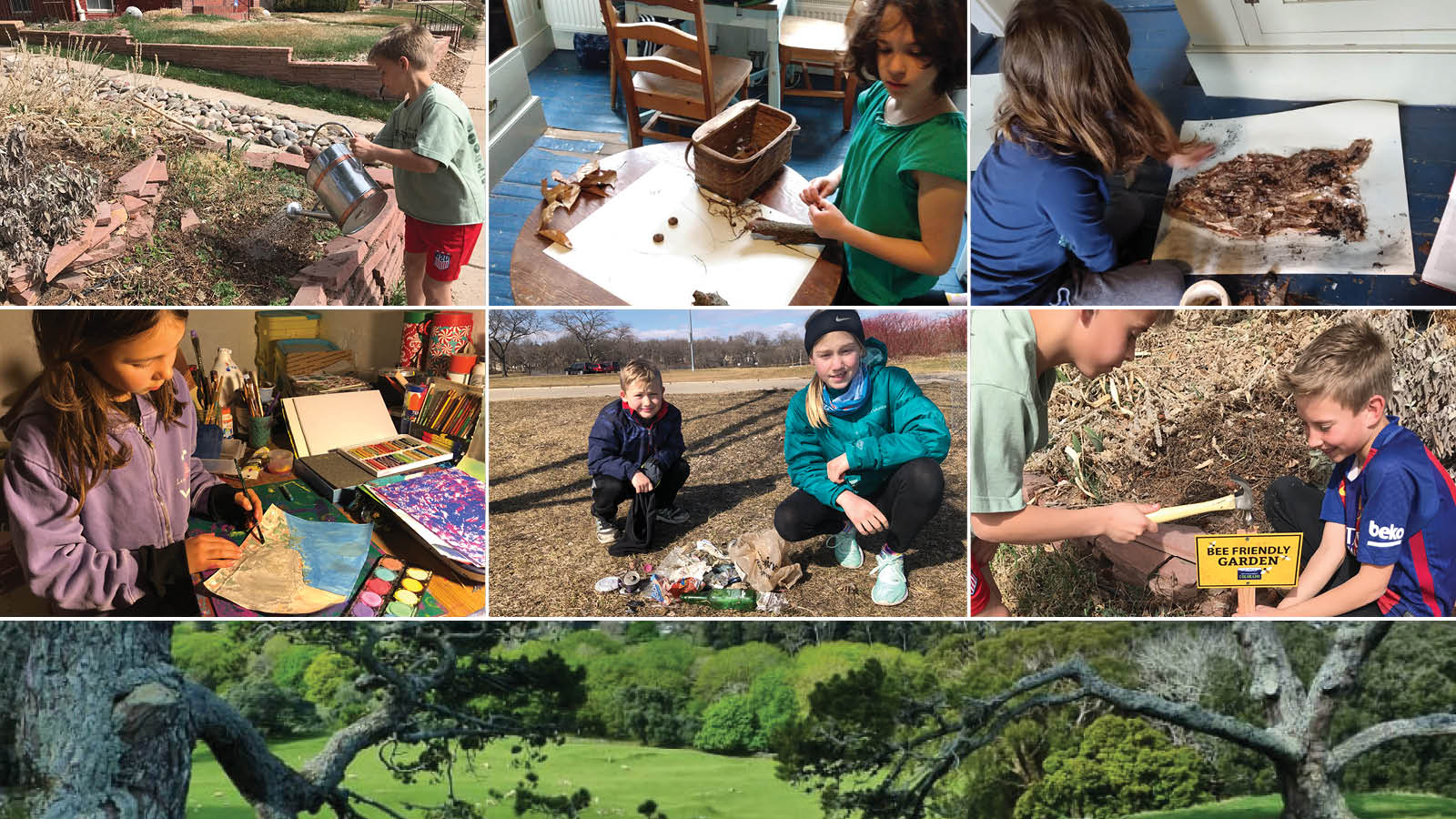
Nifty Fifty Activities
Topics
Find Out More
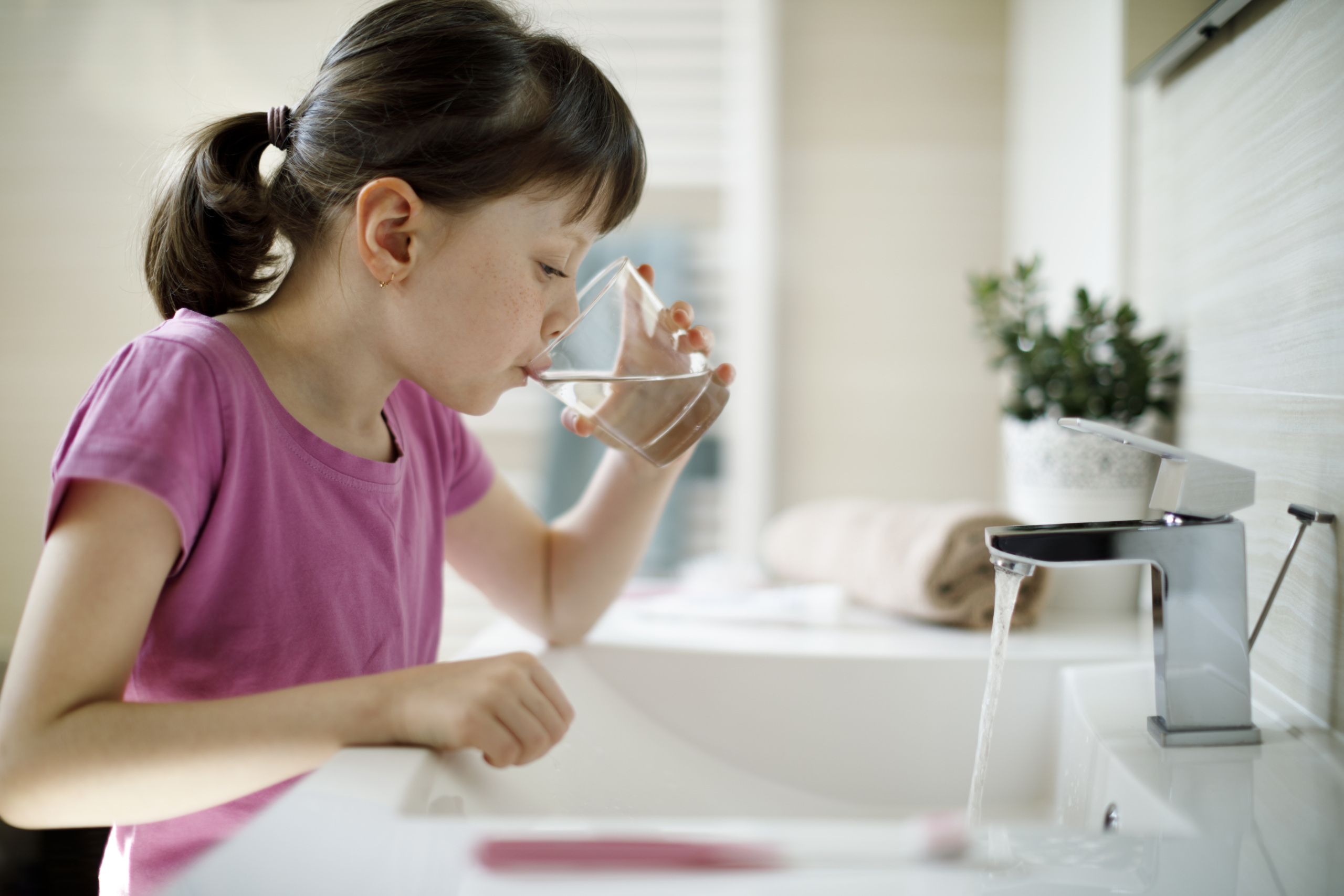
The Threat of “Forever Chemicals”
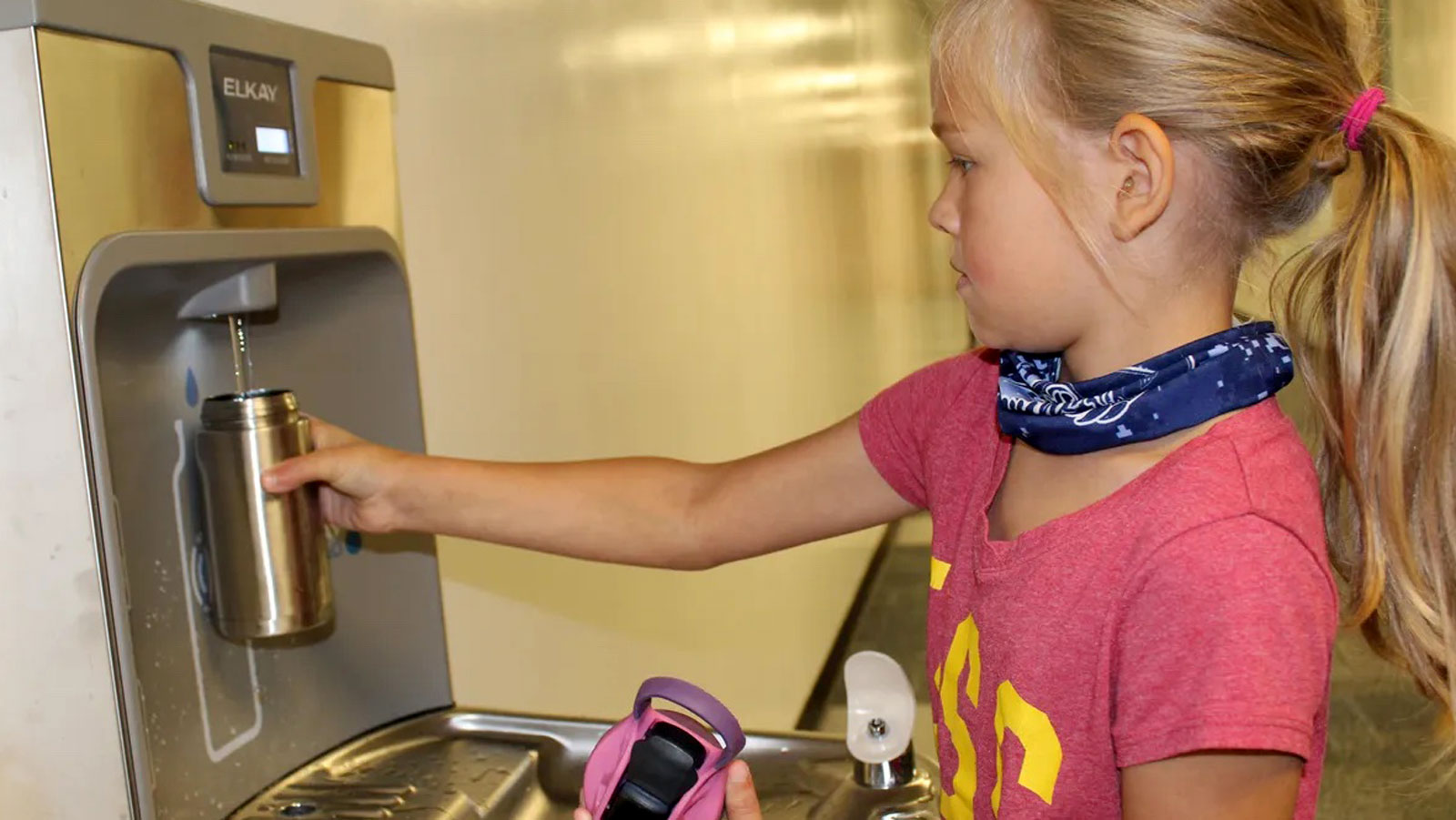
Get the Lead Out

